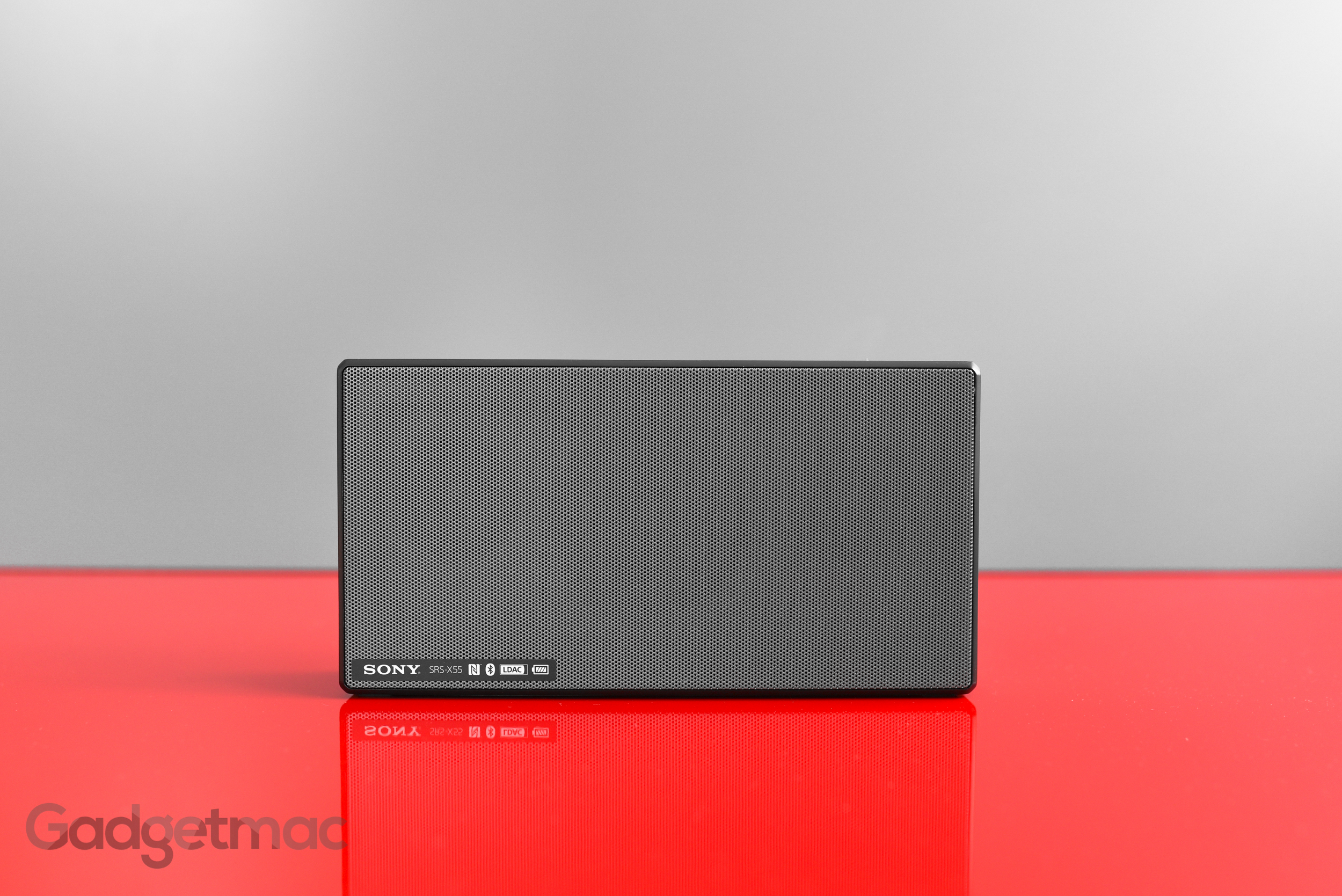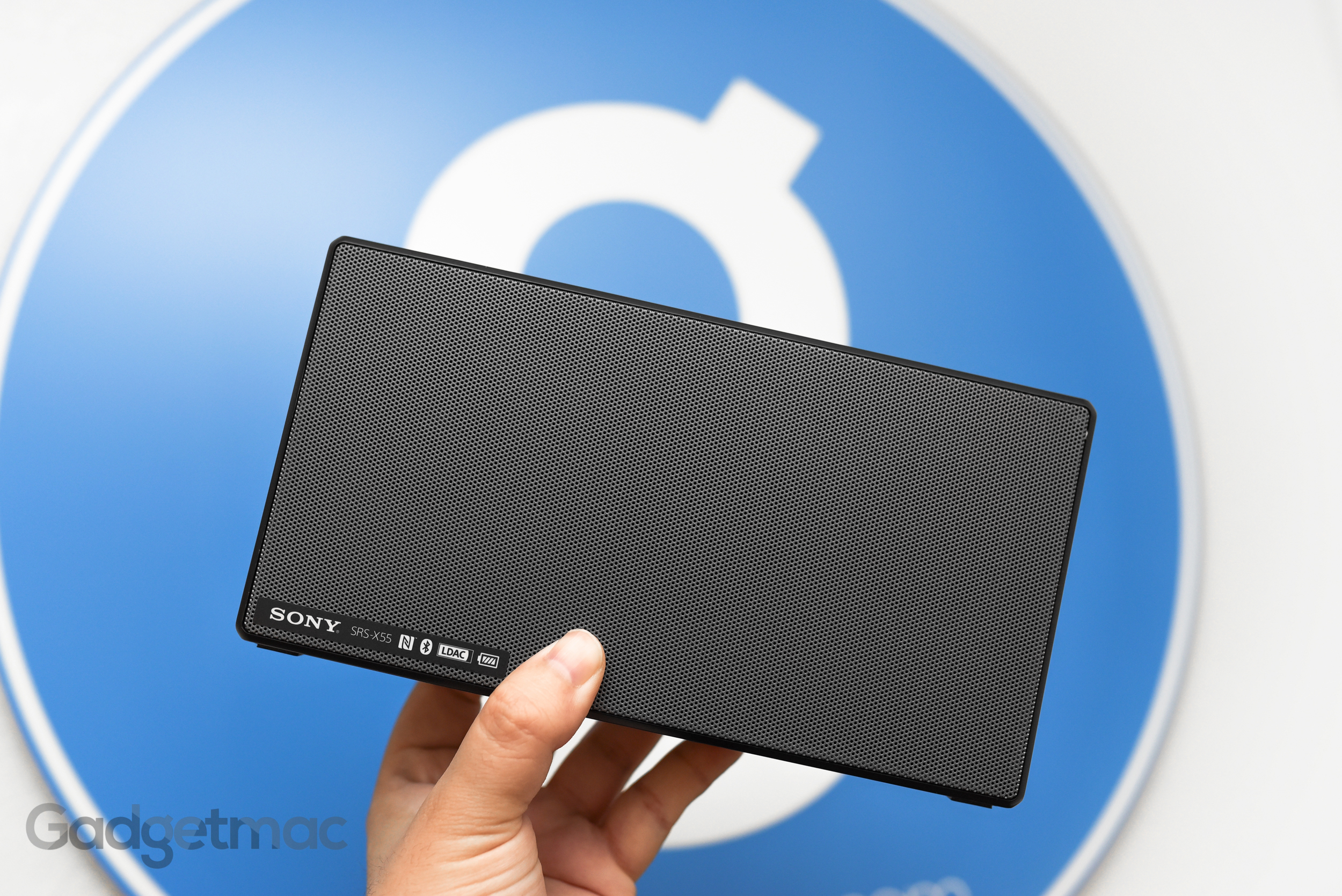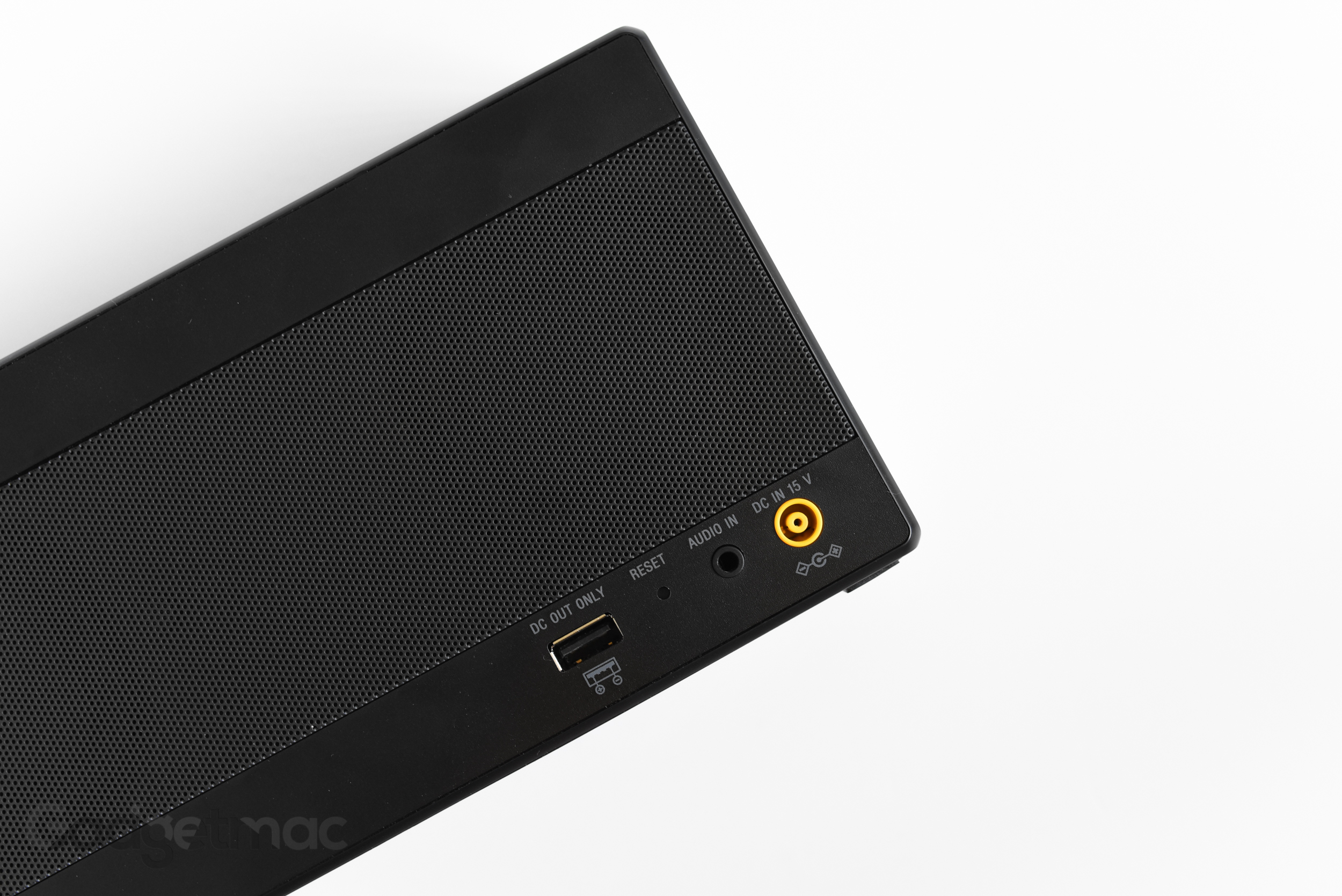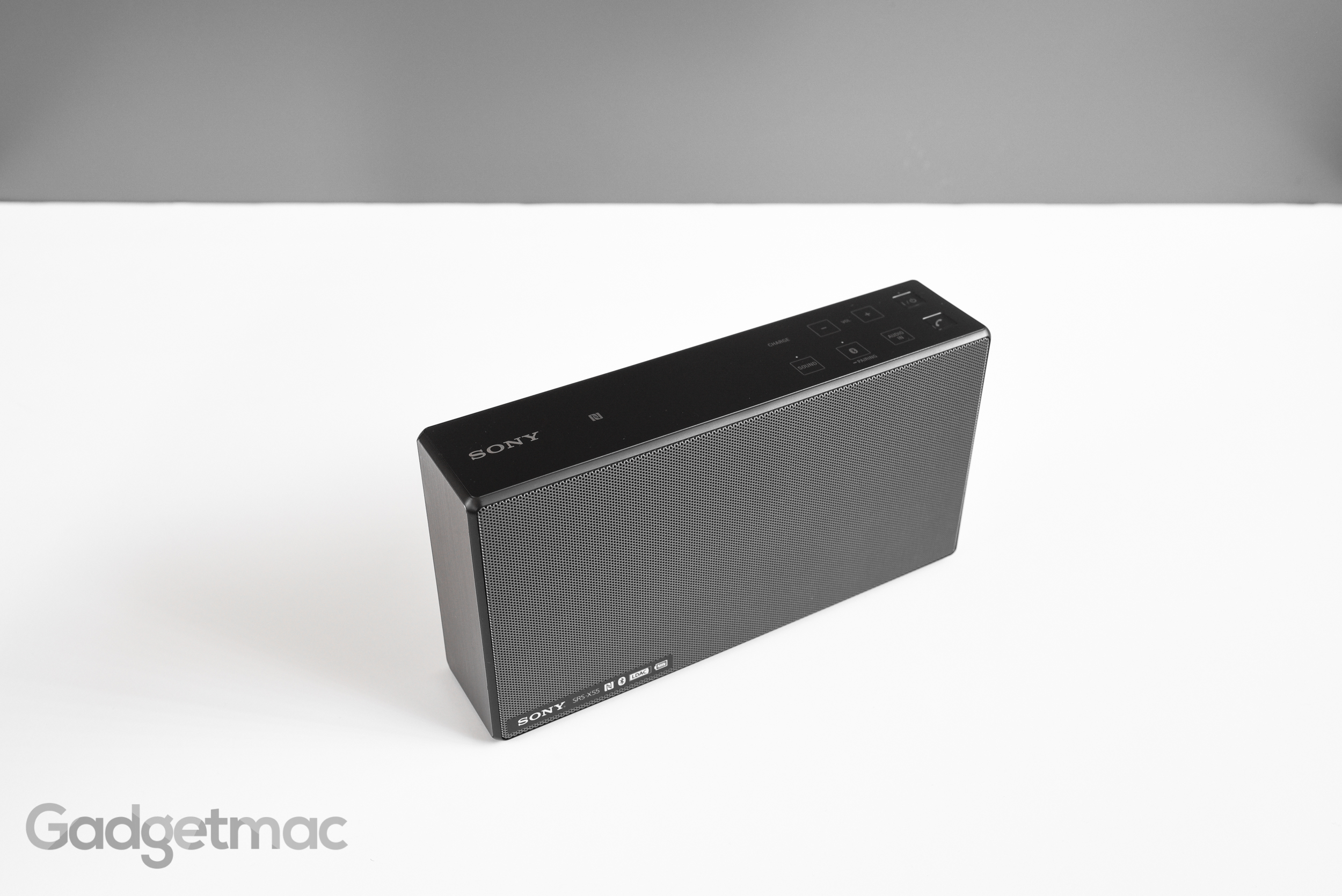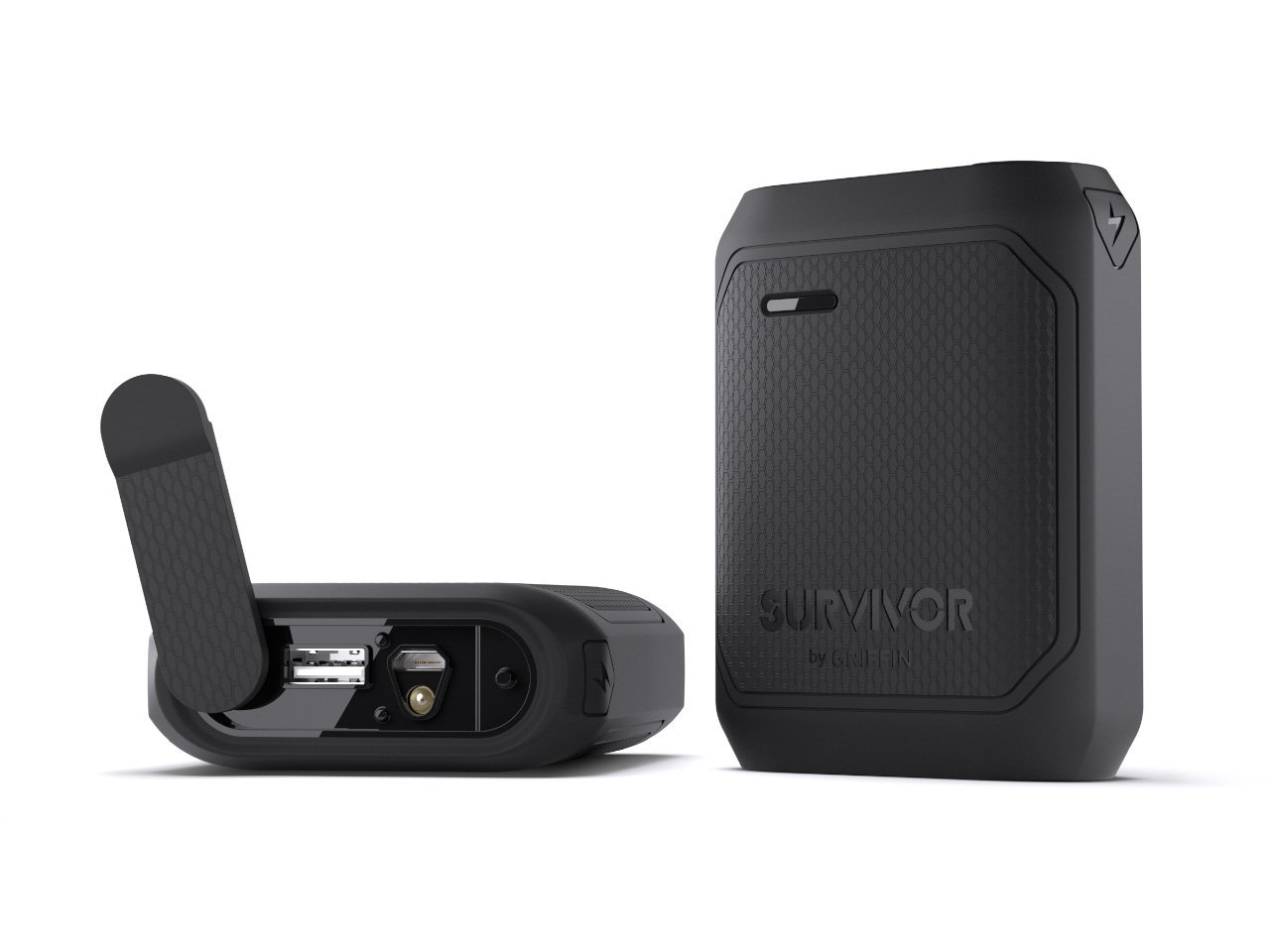Sony SRS-X55 Wireless Portable Speaker Review
/The first ever portable speaker we reviewed from Sony, the SRS-X3, had some of the best sounding bass we've ever heard, but it also left us wanting a little more. The new SRS-X55 is the slightly larger cousin of the SRS-X3/X33 that is surprisingly inexpensive considering the fact that is sounds so good...although not perfect. It's one of Sony's smaller, compact portable wireless speakers to boast refined audio performance and a bunch of drivers that spit out powerfully loud 30W audio in a true 2.1 channel arrangement. It even rivals Bose's similarly sized Soundlink 3 at nearly half the cost. So is the SRS-X55 worth buying? Let's take a closer look!
When it comes down to chiselled aesthetics, there's not much to say about the SRS-X55 only that it shares the same design language as Sony's other wireless speakers, which is fairly rectangularly shaped and with a classy, mundane bookshelf-type styling. It looks identical to its predecessor, continuing that minimalist utilitarian look. We do like the X55's distinct borderless metal speaker grille facade, brushed metal side accents and shiny control panel on top - whereas the smaller X33 sports rubber covered side and top panels that give it a more dull look in comparison. It's incredibly sturdy for its size, has a quality fit and finish, and weighs just over 2.5 pounds.
This isn't the biggest wireless speaker there is and it'll definitely fit into most backpacks and other gear bags without much effort. That said, it's not as portable as something like the Charge 2+ or the UE Boom 2, which both share a water bottle-like shape that's a little easier to carry around. The SRS-X55 also lacks weather-resistant properties including dirt and dust protection so it isn't intended to be used outdoors like most of the popular offerings you'd find on store shelves. At least not without extra care.
Inside, the X55 boasts two 1.5-inch full range speaker drivers and a larger 2.28-inch woofer with dual rear-facing passive bass radiators, which together help produce that impressive deep low-end and punchy bass response along with plenty of clarity despite the X55's narrow and portable form factor. It also helps that Sony's audio technologies enable for the highest quality of Bluetooth audio streaming so you'll never have to blame your connection for quality degradation. LDAC is Sony's in-house version of the aptX codec, which means that Bluetooth audio wirelessly streams cleanly and in the highest quality possible. You'll never know the difference.
Up top we have a set of buttons including a power on/off button, a phone button to control the speakerphone functionality or use your smartphone's voice assistant such Siri, as well as touch-sensitive volume, Bluetooth pairing, wireless/wired input selector and Sony's ClearAudio+ sound mode controls. Next to these controls is where you can use NFC to easily tap and pair your device with the X55 instead of having to use the Bluetooth pairing button.
Other features include a JBL Xtreme/Charge-like standard USB charging output that can be used to charge external portable devices like your smartphone or tablet using the X55's internal battery power. Alas, this specific port isn't very high-powered and provides a slower than usual charge compared to other portable speakers with the same feature. It's very useful nevertheless and you can fully charge an iPhone this way. There's also a 3.5mm auxiliary audio input around the back which can be used instead of a wireless Bluetooth connection. You can control from which type of connection you want the X55 to play sound from using the on-board input control on the top.
What the X55 does lack compared to its slightly smaller X33 sibling is a traditional and universal means of charging. And what I mean by that is that there's no micro-USB connection for charging using combination any USB cable and power adapter. Instead, the X55 comes with a proprietary charging brick with a round connector that plugs into the back of the speaker to charge. The X55 does require more power than some USB ports on a computer can deliver, which is the only reason why we think Sony went with this type of charger. This also means that as far as portability is concerned, prepare some extra room for that not so small wall adapter and its extra fixed long cable.
Speaking of charging, battery life has seen an improvement over the last iteration, the X5, but it's still not enough to last a full day. Sony claims that the X55 can last up to 10 hours, but in actual use we've only been able to get around 8 hours of wireless use at a comfortable listening volume with the level set a little over midway. Of course battery performance greatly depends on how loud your listening to your music, so bare that in mind. Sadly, there's no way to tell how much battery is left on the X55 apart from a single LED that will turn orange or red when the battery gets low and that's not very helpful.
Most of Sony's portable speakers are known for their ability to produce huge sound with very deep bass, and the same can absolutely be said about the SRS-X55. The first thing you immediately take notice of is the bass response. But as deep as the bass is, it never really sounds natural and lacks a tighter higher-end bass.
The bass also tends to distort somewhat when listening to bass-heavy music at higher volumes, which most likely has to do with Sony's abusive DSP trying to artificially control the bass in different ways along with the overpowered vibrations coming from the dual passive bass radiators. It doesn't sound bad, just not up to our expectations. Turning on the X55's ClearAudio+ (known as "sound") mode does help reduce the distortion a bit since the sound signature brightens up more. A firmware update will most definitely eliminate any uncontrollable bass response, but knowing Sony's history with poor consumer product support, it will most likely never happen.
Like Sony's X3, X33 and X5, the X55 continues to suffer from bass degradation at higher volume levels due to the automatic DSP control. While this is not unique to Sony portable speakers, we had hoped that with a larger speaker such as the X55 and advancement in technology that this type of performance interference wouldn't be as noticeable. Alas, like its predecessor the X55 doesn't deliver a consistent sound signature throughout all volume levels. You'll start noticing that bass degradation (mostly the deep lows) slowly but surely starts as soon as halfway past medium audio level. When bass starts to fall apart that way it makes the whole listening experience hard to enjoy.
Surprisingly enough the X55 isn't any louder than the smaller X3 model we reviewed a while ago, but it definitely handles a lot better at high volumes and doesn't completely lose all of its richness and bass like the X3 and X33 do. The X55 sounds so much better than these smaller models at higher volumes as a result despite also losing some of its bass thumpyness at these levels. It's sounds fuller across all volumes. Not only that but as expected, the X55 delivers more depth, detail, vocal and midrange clarity when put up against the X3 and X33. It also sounds significantly warmer and overall delivers a satisfyingly clear audio quality across the range.
The X55 has one clear advantage over the X33 and that is size. Which ultimately means bigger and better sound. With more room to work with, the X55 can pack more hardware under the hood meaning it can produce more powerful audio with greater details and depth using larger drivers and more of them.
If you think that JBL or Bose still have a horse in the race with the Charge 2 or the SoundLink Mini 2 then you're mistaken. The X55 destroys them both with its powerful, deep low-end and easily outperforms the more expensive SoundLink Mini 2 without costing as much. Having said that, the Charge 2 and X55 are both surprisingly similar sonically when listening in lower volumes. It's only when you play tracks with a really low-end bass line that you get to hear the X55's driver prowess shine through.
If you want clarity, detail and bass all in a single wireless and still very much portable well built speaker, then you’re really going to enjoy the SRS-X55’s sound quality prowess along with its aesthetically pleasing mundane styling. You’re not going to find an alternative that costs less than $200 and is as small as Sony’s SRS-X55 that will sound any better across the board. Having said that, we cannot fully recommend it either. It can't be charged using USB power and it fails to sound balanced at high volumes with bass capable of mildly distorting at times too. We don't think that Sony's SRS-X55 is intended to be used at high volume or outside, and for that reason you shouldn't pick one up if all you want to do is play your music loudly and socially.
Also, don’t disregard JBL’s Charge 2+ as it’s a solid and slightly less expensive and more resilient (splashproof) alternative to the SRS-X55. It's smaller and feature-rich with loads of audio capability for $150.






